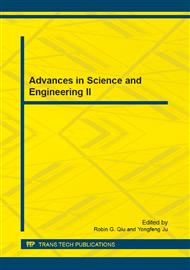[1]
H.S. Patel R.G. Holt, Generalized Techniques of Harmonic Elimination and Voltage Control in Thyristor Inverters,Part I:Harmonic Elimination, , IEEE Trans. Ind. Applicat., vol. 9, No. 3, p.302–316, May/June, (1973).
DOI: 10.1109/tia.1973.349908
Google Scholar
[2]
P. N. Enjeti, P. D. Ziogas, and J. F. Lindsay, Programmed PWM techniques to eliminate harmonics: A critical evaluation, IEEE Trans. Ind. Applicat., vol. 26, no. 2, p.302–316, March/April, (1990).
DOI: 10.1109/28.54257
Google Scholar
[3]
J. Sun, S. Beineke, H, Grotstollen, Optimal PWM based on real-time solution of harmonic elimination equations, IEEE Trans Power Electron., vol. 11, no. 4, pp.612-621, July, (1996).
DOI: 10.1109/63.506127
Google Scholar
[4]
J.W. Chen, T.J. Liang, A novel algorithm in solving nonlinear equations for programmed PWM inverter to eliminate harmonics, " in Proc. Int. Conf. Industrial Electronics, Control and Instrumentation, (IECON, 97), 1997, vol. 2, pp.698-703.
DOI: 10.1109/iecon.1997.671819
Google Scholar
[5]
D. Czarkowski, D.V. Chudnovsky, I.W. Selesnick, Solving the optimal PWM problem for single-phase inverters, IEEE Transactions on Circuits and Systems Part I, vol. 49, no. 4, p.465 – 475, April, (2002).
DOI: 10.1109/81.995661
Google Scholar
[6]
T. Kato, Sequential homotopy-based computation of multiple solutions for selected harmonic elimination in PWM inverters, IEEE Transactions on Circuits and Systems Part I, vol. 46, no. 5, pp.586-593, May, (2002).
DOI: 10.1109/81.762924
Google Scholar
[7]
J. A. Asumadu , R. G. Hoft, Microprocessor-based sinusoidal waveform synthesis using Walsh and related orthogonal functions, IEEE Trans Power Electron., vol. 4, no. 2, p.234–241, Mar., (1989).
DOI: 10.1109/63.24908
Google Scholar
[8]
T. J. Liang, R. M. O'Connell, and R. G. Hoft, Inverter harmonic reduction using Walsh function harmonic elimination method, IEEE Trans. Power Electron., vol. 12, no. 6, p.971–982, Nov. (1997).
DOI: 10.1109/63.641495
Google Scholar
[9]
J. Chiasson, L. M. Tolbert, K. McKenzie, and Z. Du, A complete solution to the harmonic elimination problem, IEEE Trans. Power Electron., vol. 19, no. 2, p.491–499, Mar. (2004).
DOI: 10.1109/tpel.2003.823207
Google Scholar
[10]
V.G. Agelidis, A. Baloukatsis, I. Balouktsis, On applying a minimization technique to the harmonic elimination PWM control: the bipolar waveform, IEEE Power Electron. Lett., vol. 2, no. 2, p.41–44, June, (2004).
DOI: 10.1109/lpel.2004.831157
Google Scholar
[11]
A.I. Maswood, W. Shen, M.A. Rahman, A flexible way to generate PWM-SHE switching patterns using genetic algorithm, " in Proc. Int. Conf. Applied Power Electronics Conference and Exposition, (APEC, 01), 2001, vol. 2, pp.1130-1134.
DOI: 10.1109/apec.2001.912508
Google Scholar
[12]
B. Erhan, E. Tarık, U. Satılmıs, Improved power factor in a low-cost PWM single phase inverter using genetic algorithms, Energy Conversion and Management, vol. 47, no. 11, p.1597–1609, Nov., (2006).
DOI: 10.1016/j.enconman.2005.08.010
Google Scholar
[13]
K. Sundareswaran, K. Jayant, T.N. Shanavas, Inverter Harmonic Elimination Through a Colony of Continuously Exploring Ants, , IEEE Trans. Ind. Applicat., vol. 54, No. 5, pp.2558-2565, May, (2007).
DOI: 10.1109/tie.2007.899846
Google Scholar
[14]
A.M. Trzynadlowski, S. Legowski, Application of neural networks to the optimal control of three-phase voltage-controlled inverters, , IEEE Trans. Power Electron., vol. 9, No. 4, p.397–404, April, (1994).
DOI: 10.1109/63.318898
Google Scholar
[15]
J. Kennedy, R. Eberhart, Particle swarm optimization, Proc. IEEE Int. Conf. on Neural Networks, Perth, Australia, 1995, vol. IV, p.1942–(1948).
Google Scholar
[16]
N. Mohan, T.M. Undeland, W.P. Robbins, Power electronics: converters, applications and design, Wiley, New York, 2003, 3rd.
Google Scholar


